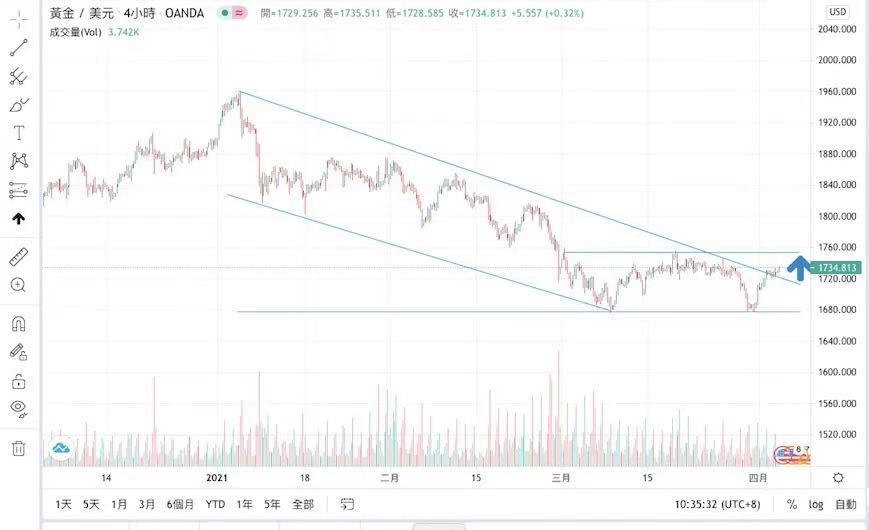Overflow of funds
Today's volatility range:
The trend of gold price has broken away from the downward pressure line and rose through the bottom of the horizontal line. Yesterday, the recent high of 1733 was tested, and the US dollar index was weak, which was beneficial to the gold market outlook.
Temporary next resistance is at 1753. Today, the proposed amplitude is between 1726 and 1745, which is mainly biased. Breaking the resistance level of 1745 can increase one line to 1753.
The amount of Sino-US wrestling in the global foreign exchange reserve currency has been revealed. According to the data of the fourth quarter of last year of the International Monetary Fund,
The proportion of US dollar in global foreign exchange reserves has dropped to about 59%, the lowest level in 25 years. In the same period, the proportion of RMB rose from 2.1% to nearly 2.3%.
Although RMB is still a minority in international foreign exchange reserves at present, with China's more open and active promotion, it has established relations with more countries and enhanced its reputation.
The influence of RMB in the future international will be strengthened day by day.
At the same time, according to Bloomberg Barclays Index, China's sovereign bonds rose by 1% in the first quarter, which is the only market in the world's 20 largest debt markets.
However, Japan, which ranks second, has fallen slightly. It is important to know that the price of sovereign bonds affects the yield of its national debt. Today, with the flood of funds, the return rate of sovereign bond investment outperforms the yield rate.
It's not easy. China and Japan can run out this time, and their backgrounds are similar. The tentative analysis is as follows: First, both countries have large current account surpluses.
This provides stable local funds for government expenditure and controls the fluctuation of bond market. Second, it has advantages in the balance of international payments, and China's rise,
From factory processing in the world to the establishment of international brands, the prices offered are beyond the expectation of many developed countries, while Japan wins by quality. Made in Japan is the guarantee of quality.
Since the 1970s, it is still a gold-painted signboard, and it still stands still despite the emergence of other Southeast Asian countries. It is common for the two countries to have surpluses in international trade, especially in the United States.
Finally, with the active participation of the central banks of the two countries, the People's Bank of China actively manages the country's liquidity problems, and often maintains economic stability through tightening or expansion.
On the other hand, the Bank of Japan tried its best to keep the debt yield at a low level and keep it stable by buying and selling government bonds during the epidemic of new coronavirus, which limited the decline of national prices.
The stability provided by these two countries is in sharp contrast to the large fluctuations in other bond markets in qiaqia, which gives investors an alternative choice during the general decline of bond markets.
The U.S. dollar index closed down at 93.92.59, and the gold price yesterday was as low as $1721.3 per ounce, as high as $1733.5 per ounce, and closed at $1729.4 per ounce.
Slightly increased/decreased by USD 1.
For detailed analysis and operational suggestions, please CLICK the following link to join the group and check with the administrator
https://t.me/mingtakchat
Previous Article Next Article


 Whatsapp
Whatsapp Telegram
Telegram
